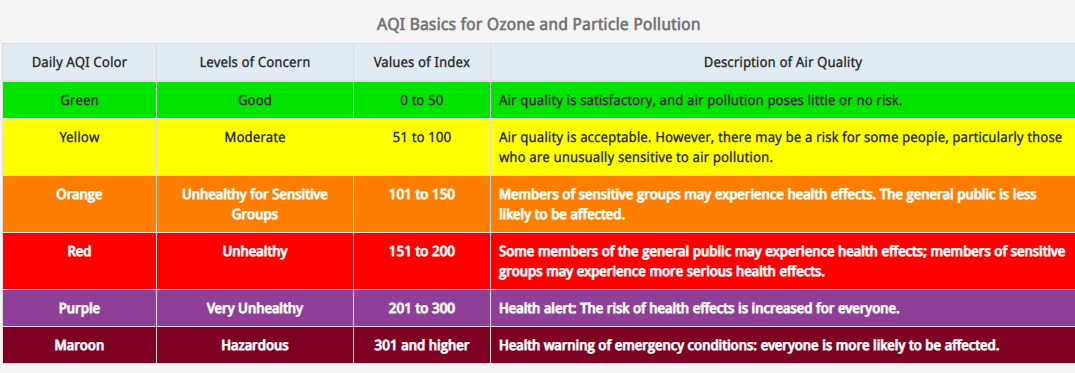The AQI (Air Quality Index) is the Environmental Protection Agency’s index for reporting air quality. The AQI has a range of 0 to 500. The higher the AQI value, the greater the level of air pollution and the greater the health concern. For example, an AQI value of 50 or below represents good air quality, while an AQI value over 300 represents hazardous air quality.
The AQI is divided into six categories. Each category corresponds to a different level of health concern. Each category also has a specific color. The color makes it easy for people to quickly determine whether air quality is reaching unhealthy levels in their community.

(click image to enhance)
There are two major types of pollutants that affect the AQI.
Ground Level Ozone Pollution: Ozone, also known as smog, can irritate your respiratory system, causing coughing, irritation in your throat or a burning sensation in your airways. It can reduce lung function, so that you may have feelings of chest tightness, wheezing, or shortness of breath. Click here to learn more.
Particle Pollution: Also known as particulate matter, particle pollution is composed of microscopic solids or liquid droplets that are so small that they can get deep into the lungs and cause serious health problems. Click here to learn more.










